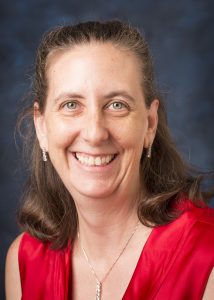A gene regulatory network (GRN) consists of genes, transcription factors, and the regulatory connections between them that govern the level of expression of mRNA and proteins from those genes. Over a period of several years, our group has developed a MATLAB software package, called GRNmap, that uses ordinary differential equations to model the dynamics of medium-scale GRNs. The program uses a penalized least squares approach to estimate production rates, expression thresholds, and regulatory weights for each transcription factor in the network based on gene expression data, and then performs a forward simulation of the dynamics of the network using a sigmoidal or Michaelis-Menten production function. GRNsight is an open source web application for visualizing such models of gene regulatory networks. GRNsight accepts GRNmap- or user-generated Excel workbooks containing an adjacency matrix representation of the GRN, SIF, or GraphML files and automatically lays out the graph of the GRN model. GRNsight’s diagrams are based on D3.js’s force graph layout algorithm, which was then extensively customized. GRNsight uses pointed and blunt arrowheads, and colors the edges and adjusts their thicknesses based on the sign (activation or repression) and magnitude of the GRNmap weight parameter. Visualizations can be modified through manual node dragging and sliders that adjust the force graph parameters. In addition to discussing how these efforts have contributed to our understanding of the gene regulatory network controlling the response to the environmental stress of cold shock in budding yeast, Saccharomyces cerevisiae, I will put them in the context of an Open Science Ecosystem, in which the process and products of science are open and accesible to all. Together, the life cycle of these two programs illustrate the differences between the cultures of biology, mathematics, and computing, the challenges and benefits of bringing an existing code base up to open development standards (GRNmap), and the advantages of starting a project using best practices from the beginning (GRNsight). Our goal is to facilitate reproducible research.

Seaver College of Science and Engineering Faculty Staff Headshots
Dr. Kam Dahlquist is an Associate Professor of Biology and Affiliate Faculty of the Bioethics Institute at Loyola Marymount University. Dr. Dahlquist earned a B.A. in Biology from Pomona College and a Ph.D. in Molecular, Cellular, and Developmental Biology from the University of California, Santa Cruz. Dr. Dahlquist performed postdoctoral research at the Gladstone Institute of Cardiovascular Disease at the University of California, San Francisco, and taught for two years at Vassar College before joining the LMU faculty in 2005. In her research, Dr. Dahlquist follows an interdisciplinary approach to understanding gene regulatory networks that involves cutting-edge techniques in genomics, mathematical, and computational biology. This research crosses over into her teaching in such courses as Molecular Biology of the Genome, Biomathematical Modeling, Biological Databases, and Bioinformatics Laboratory. She believes that her research and teaching must be informed by and contribute to a broader social context. She has worked with various groups such as the UCSF Science and Health Education partnership and the Association for Women in Science (AWIS) to improve science education for all and to increase the numbers of women and minorities in science. She believes strongly in training her students to apply ethical standards to the conduct of scientific research. Finally, she promotes an Open Science Ecosystem in which the process and products of science are open and accessible to all.
kdahlquist@lmu.edu


